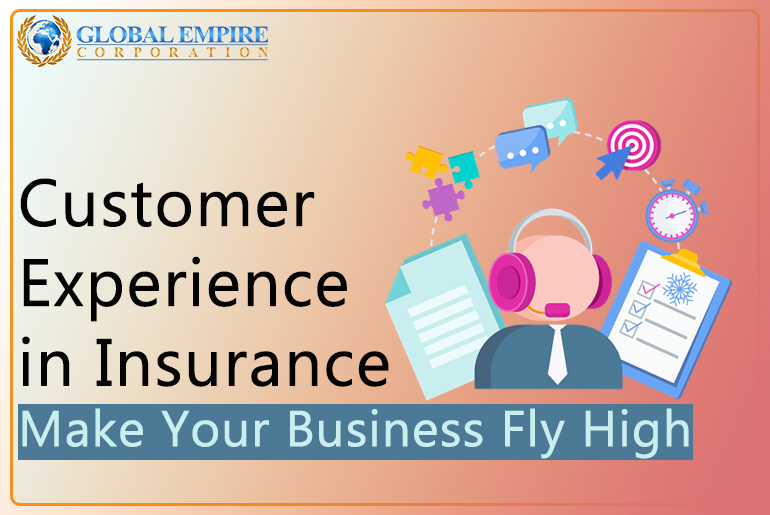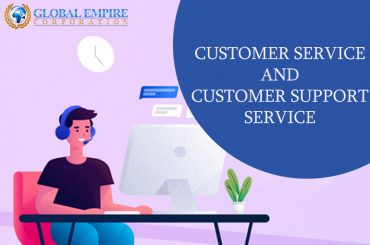The distinction between excellent and terrible customer service has always been obvious, and firms on the lower end of the scale frequently have to pay the price. This applies to insurance just as much as it does to any other customer-oriented business. Because of the speed and breadth of social media nowadays, the effects of poor service are compounded. One mishandled allegation, one miscalculation recorded on a smartphone, might swiftly grow into a costly brand catastrophe. This is just one reason why businesses in all sectors should place a greater emphasis on providing excellent customer service.
It’s not simply about lowering the risk of customer service errors when offering a positive client experience. It is becoming more common for businesses in competitive marketplaces to use it to differentiate their brands.
According to McKinsey’s global study across sectors, enhancing the customer experience may generate profitable growth considerably more effectively than increasing advertising spending or cutting pricing. Here we will discuss the customer experience strategy that can help your business be successful.
It will lead to more profits.
Developing a mobile app or hiring additional contact centre agents aren’t enough to provide a great CX. From distribution and underwriting to claims management, considerable investments, continuous improvements, and coordination across consumer channels and corporate departments will take place in this domain.
Customer happiness may be a source of profitable development, but it necessitates a shared vision and unprecedented levels of collaboration across traditionally strong organisational divisions. You will find plenty of customer experience management services for all the businesses in the USA that can deliver profit.
What is stopping you from providing a better customer experience?
Understanding what consumers value is not a simple undertaking. Therefore, so many businesses fail to enhance customer experiences. Deep consumer insights, robust analytics, and modelling the most significant customer journeys, with cross-functional ownership and multichannel, end-to-end management, are required to identify what drives customer happiness and translate it into operational performance gains.
Customer experiences are now delivered by marketing, distribution, underwriting, and claim functions in typical insurance business. With the support of a website, a sales call centre, a service department, and other resources, most of which are handled by separate executives with distinct objectives and KPIs. This structure might have a function, but it ignores that the consumer experience is frequently a single trip. Customers are unlikely to distinguish between an agent and a claims adjuster because both represent the insurance company in the case of an accident. Outbound call service can be a pathway to unlock enhanced CX for your business.
So, how can insurers get beyond these impediments and provide great customer service? The first stage is for everyone to agree on what kind of experience they want to deliver. Experts dispute some essential aspects of this problem. Some argue that having fewer consumer touchpoints is preferable, while others say that having more contacts provides more possibilities to give value and establish loyalty. Furthermore, the higher the value of a claim, the more time consumers are ready to spend in live conversations during the initial loss. The advantages of outsourcing customer support for your business services are numerous.
How can you transform the customer experience in insurance?
To provide a better client experience, you must first understand what they want. However, true transformations occur when carriers take a holistic approach to client experiences and how their business operates. Only a comprehensive approach can result in measurable and long-term gains.
Four components can help you deliver a better customer experience.
Inspiration.
You must create a holistic vision plan for customer-centric businesses and execute them with a clear target in sight.
Insights.
You will have to develop customer insights and align them with customer satisfaction. It would become your key performance indicator that can impact your business positively.
Improvement.
Redesigning the customer journey from scratch with the help of digital components as the standard.
Institutionalisation.
Building the customer-centric approach in the organisation. You must also change culture and processes from the front line to C-suite. There are various reasons to outsource customer service.
Each aspect may improve the CX, but only when all four are together can the full impact be observed. Making enhancements without data, for example, may imply spending money on things that consumers feel are irrelevant. Because change does not persist with the front line, vision without institutionalisation may result in missed objectives. Outsource customer care service to offer superior services than having an in-house team.
Conclusion.
To gain and sustain a competitive advantage, insurers must devote both human and financial resources to customer-centricity. These techniques have already been employed by best-in-class players, with cascading benefits.Insurers have a large and rising opportunity to differentiate themselves by providing a better client experience. Therefore, customer experience support services for insurance companies can be a gateway to success.
Getting the organisation rolling is a major difficulty for many businesses. There isn’t any more time to waste. Consumer power is growing in the digital age. Carriers who stick to product, function, or channel-centric perspectives risk falling behind as industry leaders cultivate closer connections with consumers and expand their market share. Of course, transforming any major business is challenging, but the stakes are high.
Also Read: How outsourcing your travel customer support service can help your business grow





